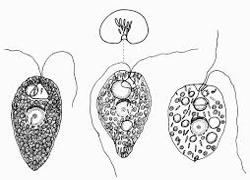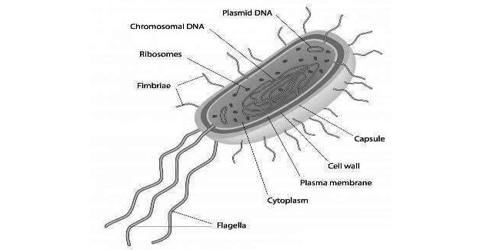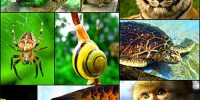Chrysophytes of the Kingdom Protista group include diatoms and golden algae (desmids). They are found in freshwater as well as in marine environments. They are microscopic and float passively in water currents (plankton). Most of them are photosynthetic.
Chrysophytes mainly include diatoms that occur in aquatic and moist habitats. They may float free or may occur at the bottom. The aggregate at the bottom of the water table and form diatomaceous earth. It is also known as diatomite.
There are three main types of chrysophytes: diatoms (Bacillariophyceae), golden-brown algae (Chrysophyceae), and yellow-green algae (Xanthophyceae).

In diatoms, the cell walls form two thin overlapping shells, which fit together as in a soapbox. The walls are embedded with silica and thus the walls are indestructible. Thus, diatoms have left behind a large amounts of cell wall deposits in their habitat: this accumulation over billions of years is referred to as ‘diatomaceous earth’. Being gritty this soil is used in polishing, filtration of oils, and syrups. Diatoms are the chief ‘producers’ in the oceans.
They are important food-producing organisms. They make more than half of the food of aquatic animals. Their dead bodies help in the production of petroleum products. They are inert and are used in the filtration of liquid products. They are used in toothpaste as a cleansing agent. They act as an excellent insulating material. They are very good indicators of pollution.
Chrysophytes Characteristics –
- This group includes diatoms and golden algae (desmids).
- They are found in freshwater as well as in marine environments.
- They are microscopic and float passively in water currents (plankton). Most of them are photosynthetic. Diatoms are the chief `producers’ in the oceans
- In diatoms, the cell walls form two thin overlapping shells, which fit together as in a soapbox. The walls are embedded with silica and thus the walls are indestructible.
Economic Importance
- Protists serve as the foundation of the food chain.
- Some protists also produce oxygen and may be used to produce biofuel.
- Protists are the primary sources of food for many animals.
- Phytoplankton is one of the sole food sources for whales
- Seaweed is an alga, which is considered a plant-like protist.
- Zooplankton is fed on by various sea creatures including shrimp and larval crabs.













